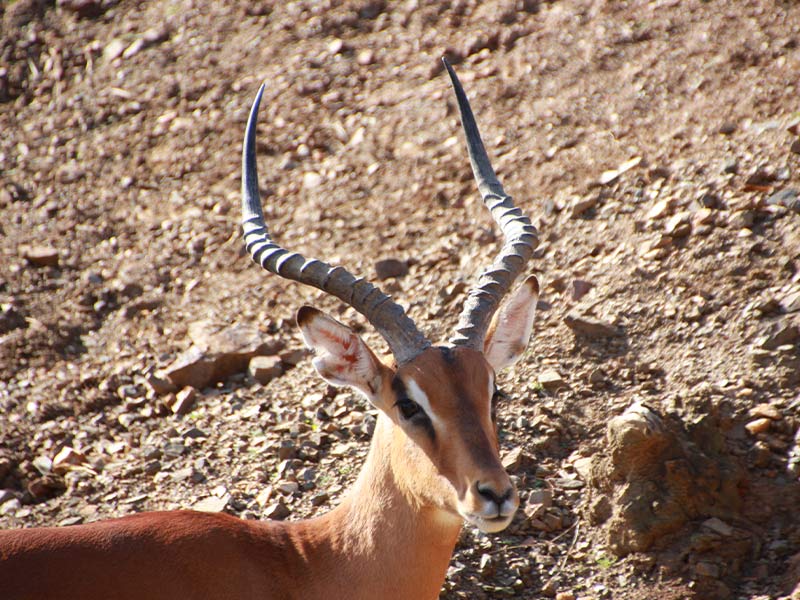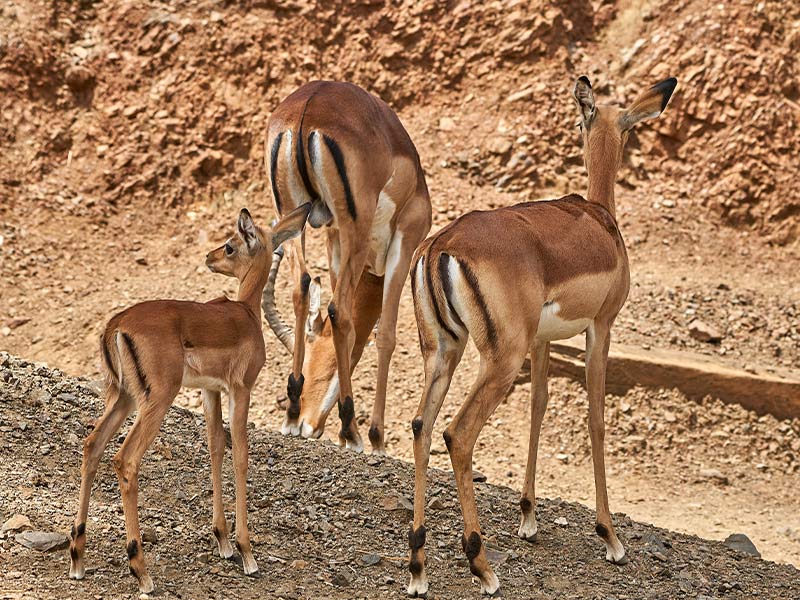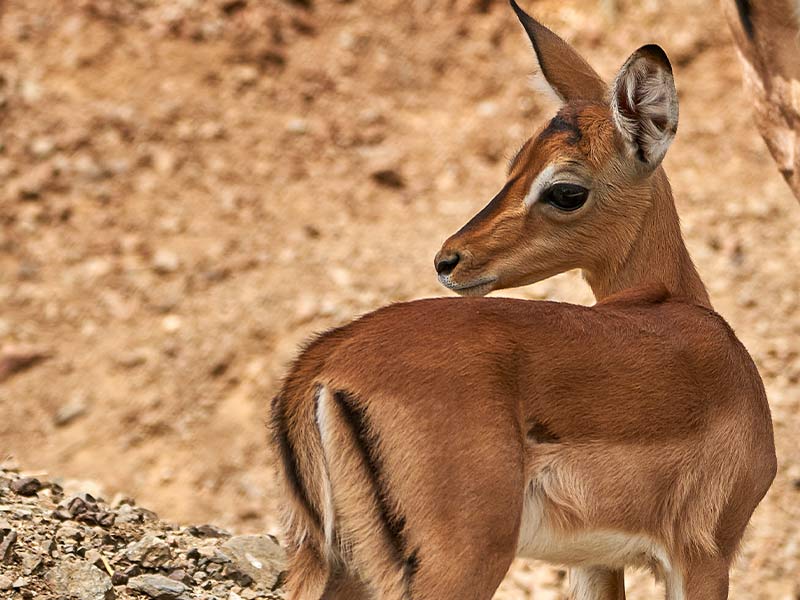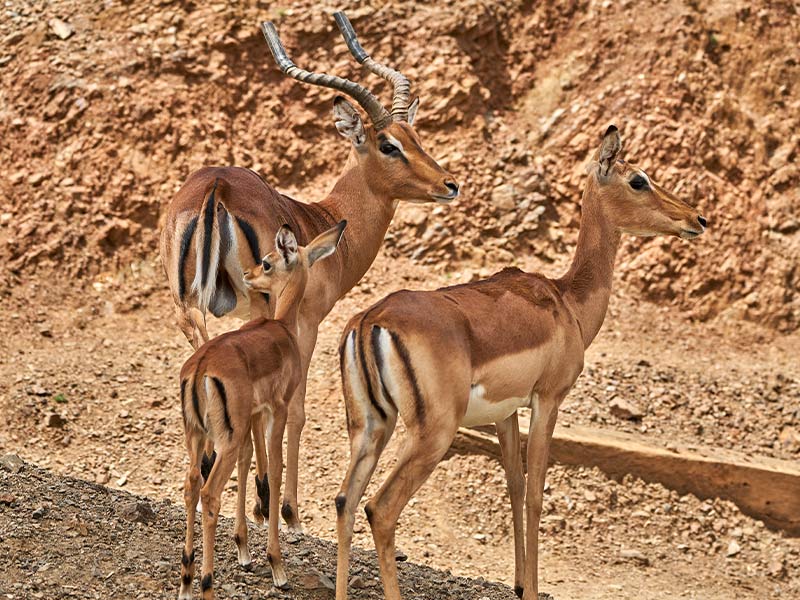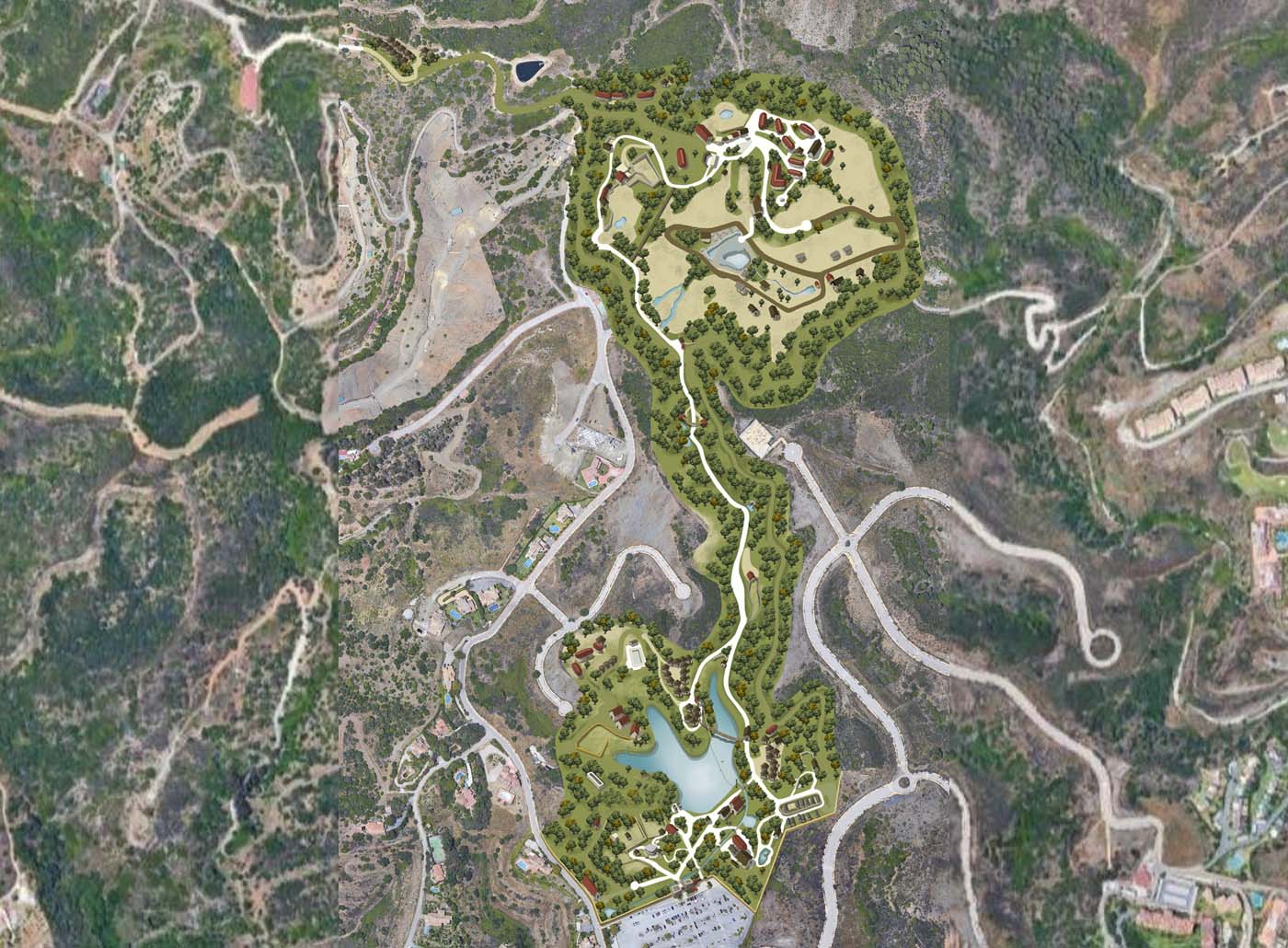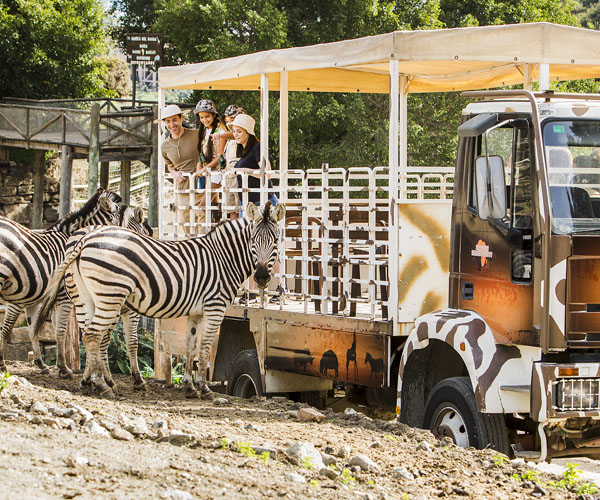The impala is found in forests containing little undergrowth, and grasslands of low to medium altitude.
There is a clear sexual dimorphism in that the male has S-shaped horns while the female lacks them.
Their mating system is polygynous, meaning that the male mates with more than one female. Before giving birth, the female is isolated from the herd until 1 or 2 days after birth. A calf is born after 6-7 months of gestation and they are gathered in nurseries.
Impalas have different social structures depending on the season and on available space. During most of the year, males live in groups separate from groups of females and young and come together during the mating season.
Rainy season:
- Groups of territorial males with and without breeding females.
- Groups of non-territorial adult and juvenile males.
- Breeding groups of 30 to 120 females and juveniles.
Dry season: is the rutting season, and males can be found together or mixed with herds of females.
Their main threat is the destruction and loss of their habitat.
